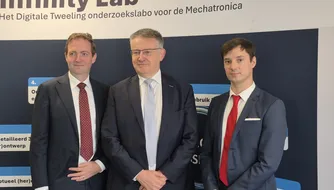Connecting your workforce
How to reduce the impact of macro trends in manufacturing?

The war on talent rages, the workforce ages and manufacturing jobs become ever more complex
Reduce the impact of these trends by connecting your workforce through technology like tablets and smartglasses.
Your digital operations transformation
Connecting your workforce: your challenges
Is your organisation affected by the growing war for talent? Is your workforce aging? Manufacturing jobs are becoming more complex through increasing pressure on operator efficiency, compliance regulations, machine developments, customer expectations, and product complexity. At the same time, getting the support you need can be limited by travel restrictions and reduced budgets.
How do you minimise the impact of these macro trends in manufacturing? The solution begins with connecting your workforce through technology like tablets and smartglasses.
Video: https://www.youtube.com/watch?v=VenjJl3j7tg&feature=emb_imp_woyt
PwC can help you bring technology to the shop floor
With the help of robust, user-friendly workflow software and mobile and wearable technology, your people can be guided and supported in their work from anywhere. Confirming steps, providing video instructions and digital recording of measurements can reduce onboarding time for new employees and improve quality and productivity across the board.
At the same time, engineers can look up measurement statistics or workflow history using a web-based platform. The ability to take digital photos and annotations on the spot also improves problem solving between operators and engineers.
Remote support in real-time
When an operator encounters a problem, they can share video footage with the helpdesk in real time via tablets or smart glasses, and remote support applications. Engineers can provide guidance instantly from any location, and videos can be saved and used later for continuous improvement purposes.
PwC’s solution: Connect your workforce with assets and information
Our Management Consulting - Operations specialists have established three predominant levels of connectivity:
Locate
Connecting your workforce by location alone already presents many opportunities for safety and quality assurance. For example, the location information of an operator can allow or prohibit them to access specific areas or execute certain tasks.
In case of a hazardous situation or emergency in an industrial environment, all internal employees and contractors can be traced and evacuated.
Inform
Including additional static information in the connection, such as real-time performance data, manuals and routes, supports the workforce in its tasks and assures better compliance with safety, quality and operational procedures.
For example, providing the operator with a machine’s oil temperature may help them make a better and faster decision on specific preventive maintenance needs.
Interact
When the static information is extended to dynamic information and interaction, the operator is supported in an even more elaborate way.
For example, they can be steered to execute certain tasks based on data input, measurements and circumstantial information, similar to a dynamic decision tree. Another example would be remote engineering support via communication by data exchange, call, or video.
Connecting your workforce with these various sources and utilising one or more connectivity levels across different applications can have a significant impact on your company’s overall performance. Industry leaders report breakthrough performance improvements with, for example, digital instructions and inspections leveraging mobile and wearable technology.
Connectivity is a tangible and cost-effective solution through which your operators can experience firsthand the impact and potential of digitalisation. It enables them to embrace the digital journey, and your organisation to be perceived as an attractive employer where people upskilling is actively applied.
As with any other digital solution, connectivity cannot be seen as a standalone solution, but should be integrated and leveraged by other solutions and systems. Therefore, it’s important to incorporate this spot solution in your existing IT landscape.
It’s clear that while connecting your workforce has a major impact on your operators’ performance, this solution should be approached from a broader perspective than purely operational. Connectivity should also be incorporated into, for example, your organisation’s HR and Technology strategy and capability perspectives.


